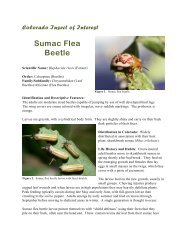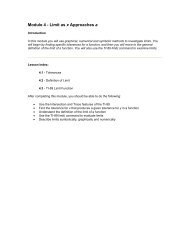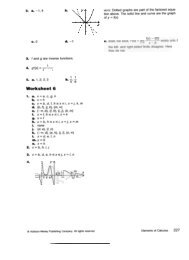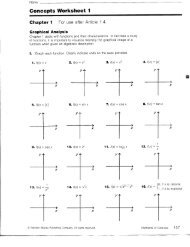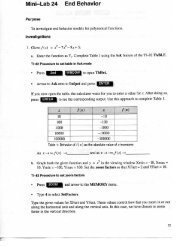The van Hiele Model of the Development of Geometric Thought
The van Hiele Model of the Development of Geometric Thought
The van Hiele Model of the Development of Geometric Thought
Create successful ePaper yourself
Turn your PDF publications into a flip-book with our unique Google optimized e-Paper software.
8<br />
3. to create shapes-<br />
LEARNING AND TEACHING GEOMETRY, K-I2 I<br />
I<br />
I<br />
by copying figures on dot paper, grid paper, or tracing paper, by<br />
.~4nr-t:~oboards and circular geohaar4:; or by tracing.cutouts<br />
. .<br />
by drawing figures<br />
by constru&ng figures -with sticks, straws, or pipe aeanen or by<br />
tiling with manipulatives, pattern blocks, and so on<br />
j<br />
1<br />
4. to describe geometric shapes and constructs verbally using appropriate<br />
standard and nonstandard language<br />
rn a cube "looks like a block.or a box"<br />
rn "wrnen" for angles<br />
5. to work on problems that can be solved by managing shapes, meas- I<br />
uring, and counting<br />
rn Find <strong>the</strong> area <strong>of</strong> a box top by tiling and counting.<br />
Use two triangular shapes to make a rectangle; ano<strong>the</strong>r triangle.<br />
(tangrams). I I<br />
Lml 1 (Anaiysb): Form recedes and <strong>the</strong> properties <strong>of</strong> figures emerge.<br />
Provide students opportunities-<br />
1. to measure, color, fold, cut, model, and tile in order to identify prop-<br />
erties <strong>of</strong> figures and o<strong>the</strong>r geometric relationships<br />
fold a kite on a diagonal and examine <strong>the</strong> "fit."<br />
I<br />
2. to describe a class <strong>of</strong> figures by its properties (charts, verbally, "property I<br />
cards")<br />
I




